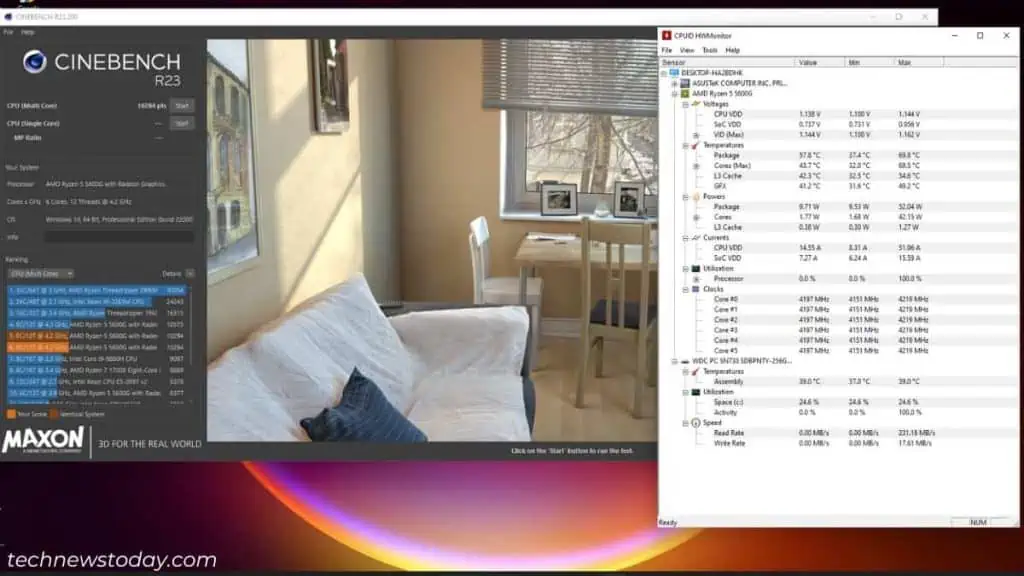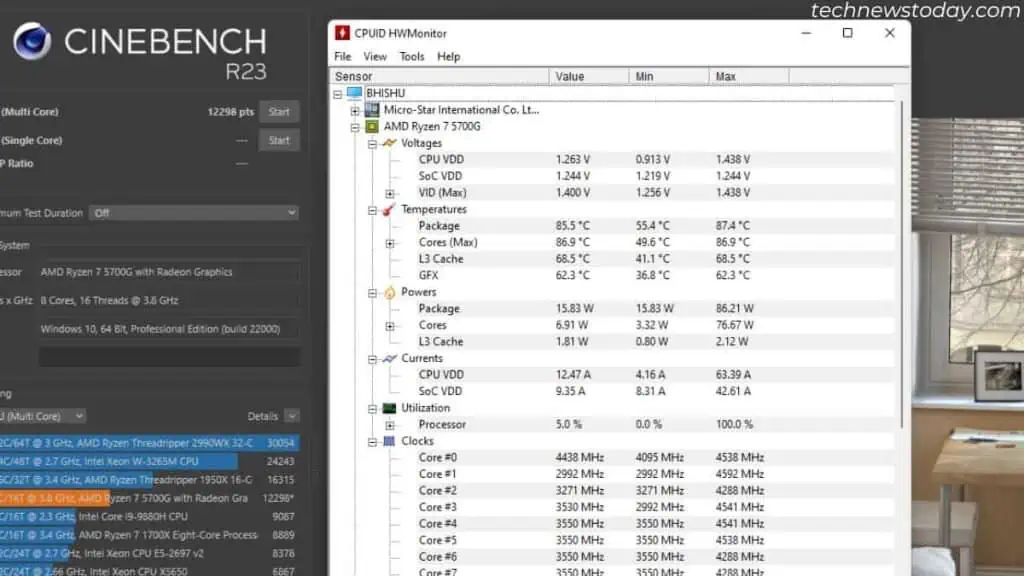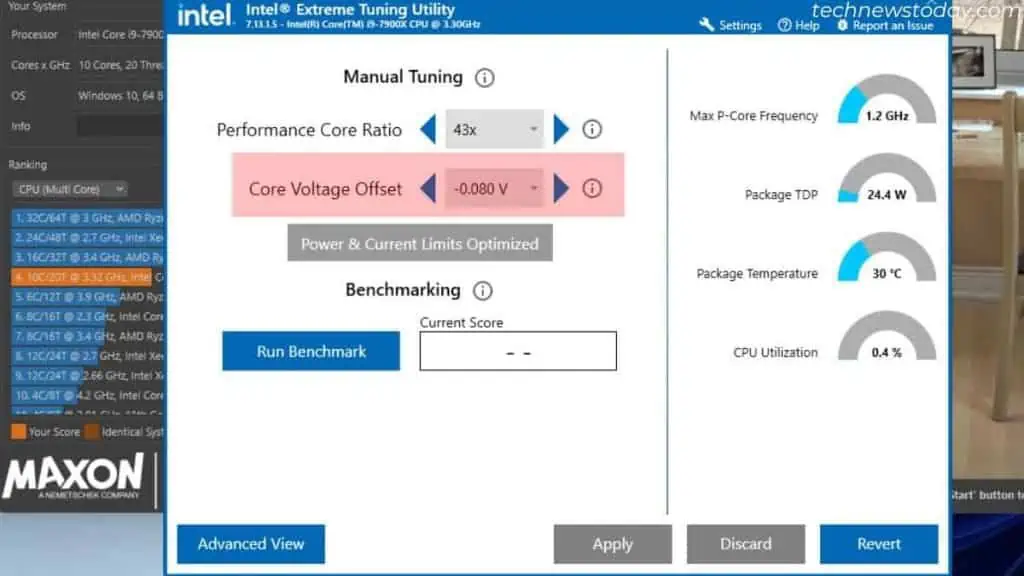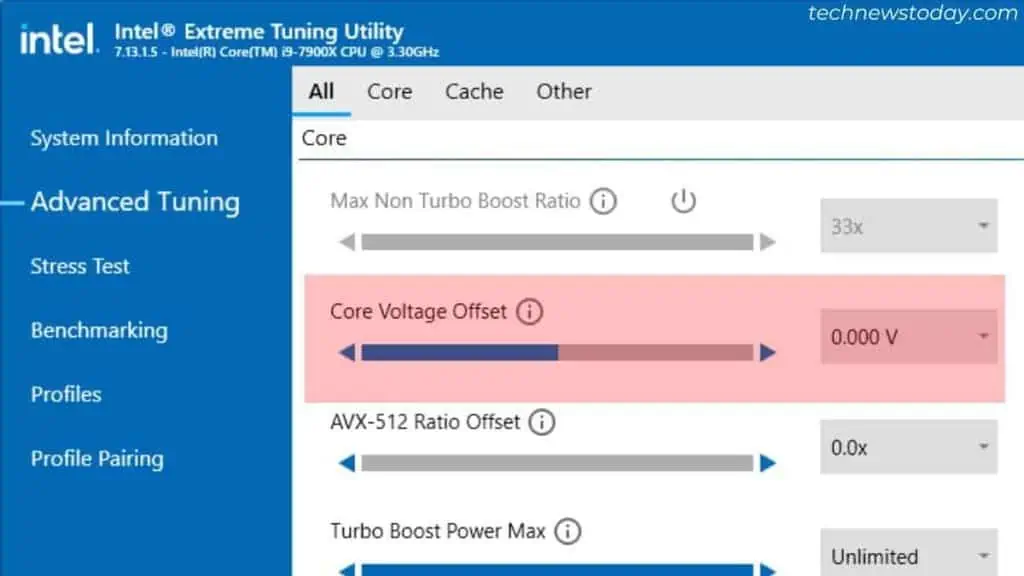Whenoverclocking a CPU, the idea is to increase the voltage to achieve a higher clock speed. But that leads to overheating and can affect the overalllifespan of the CPU.
That said, the safest choice toreduce the temperaturewithout affecting the performanceis undervolting the CPU. The steps are almost similar to overclocking:
That’s one strategy. you may even tweak other voltage options to see how it works out for you.

Here, I’ll guide you with the easiest ways to undervolt a CPU and even share my experiences on different systems.
Trust me, this is the most reliable option. The only hassle isgetting to BIOS each timeto tweak the voltage setting.
Also, note that the exact steps depend onwhat motherboard you haveas the UEFI interface varies by manufacturer.

Without further ado, let’s get into the steps:
Note:While you may set up the‘Override’option, this will make the voltage stable at all times (even when theCPU is at low load). Only go for this if yourBIOS doesn’t support the Offset mode.
On myASUS PRIME B450-PLUSwithRyzen 5 5600G APU, the 4200 MHz overclockoverheated the processorto more than 95 degrees (max. voltage recorded = 1.44 V).
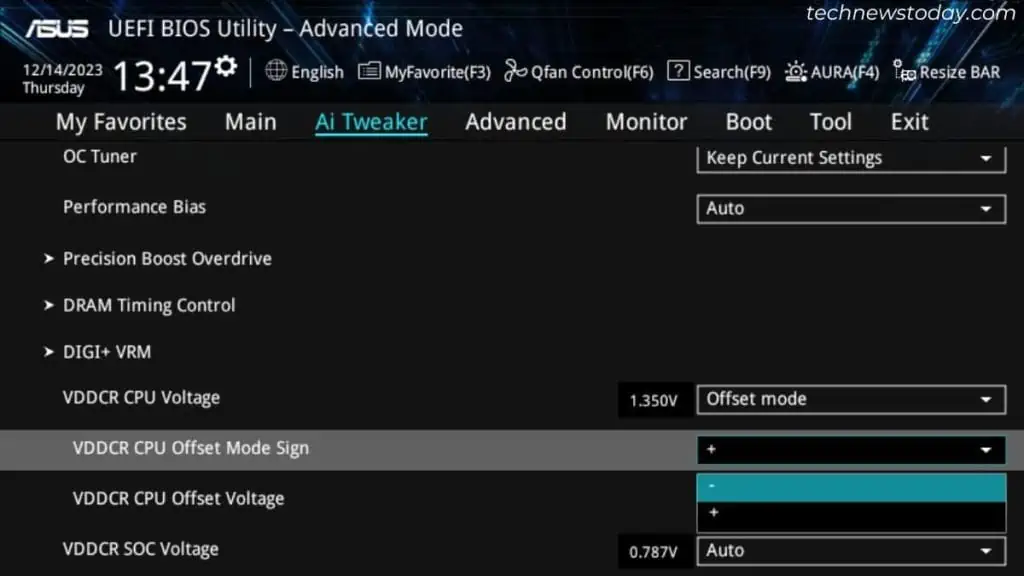
I’ve posted the highlights of my test in the table below. I wasn’t just able to decrease the temperature but evengot a slightperformance improvement, thanks to undervolting.
That’s because my Ryzen processor was thermal throttling in the previous OC setting, and couldn’t run at the clock speed it was meant to reach.
After the reduction in the temperature,there was no thermal throttling, so it was able to reach a slightly higher speed.
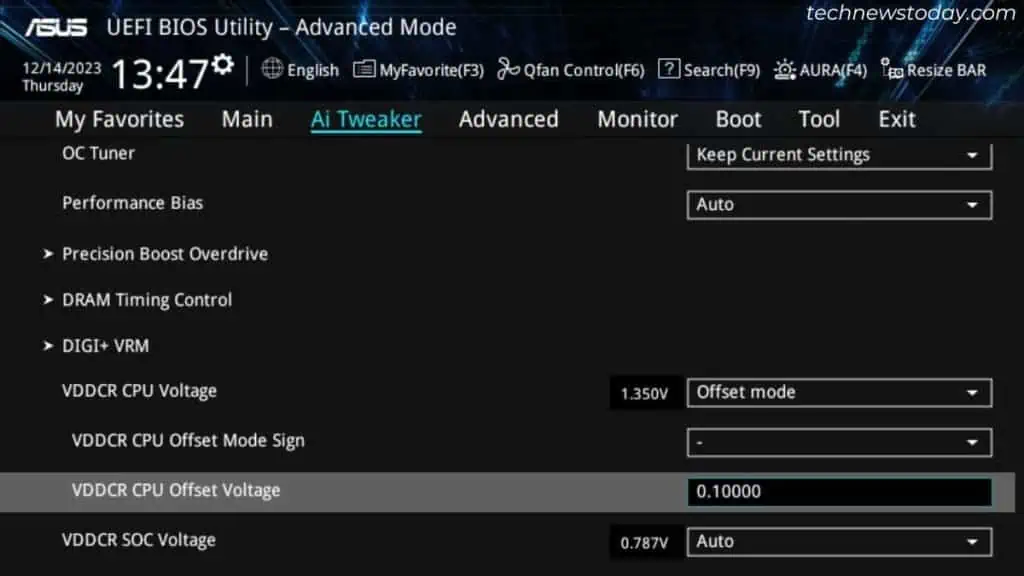
After testing out a few games, the sweet spot for me was the-0.275 offset.
Similarly, on myMSI MAG B550M MORTAR, I undervolted theRyzen 7 5700G APUby -0.09 V.
Here, the temperature used to hit more than 100 degrees (quite concerning!) at 1.438 V. With my new settings, the temperature doesn’t go beyond 88°C at 1.344 V.
